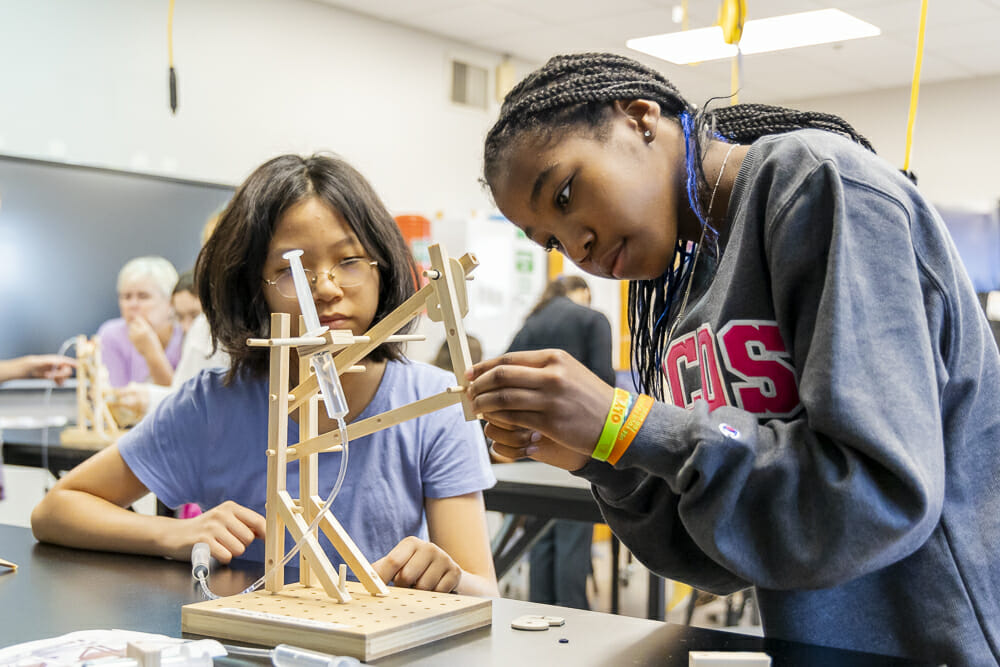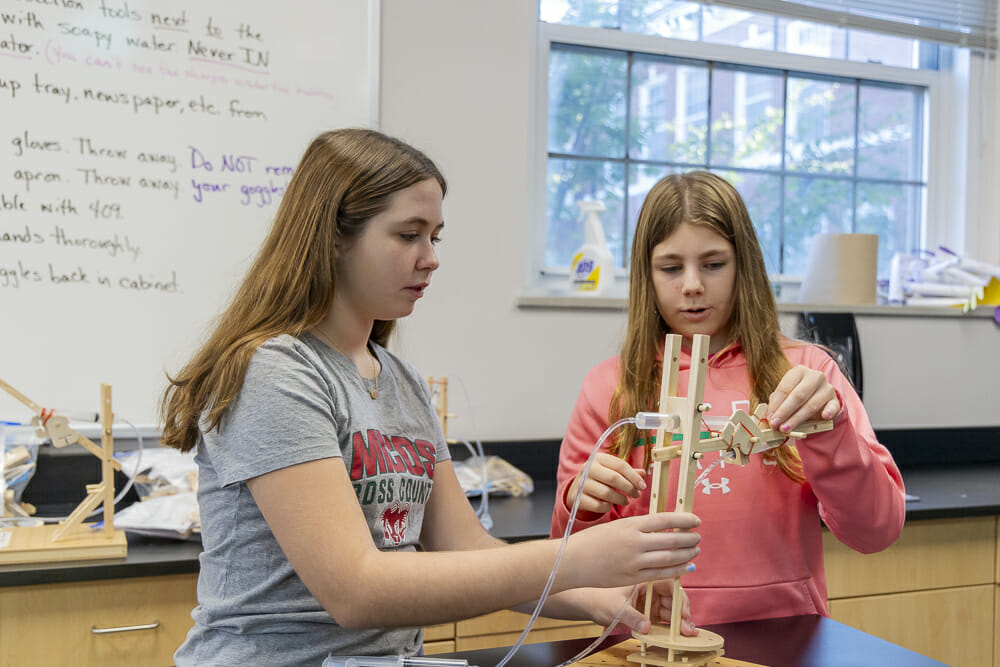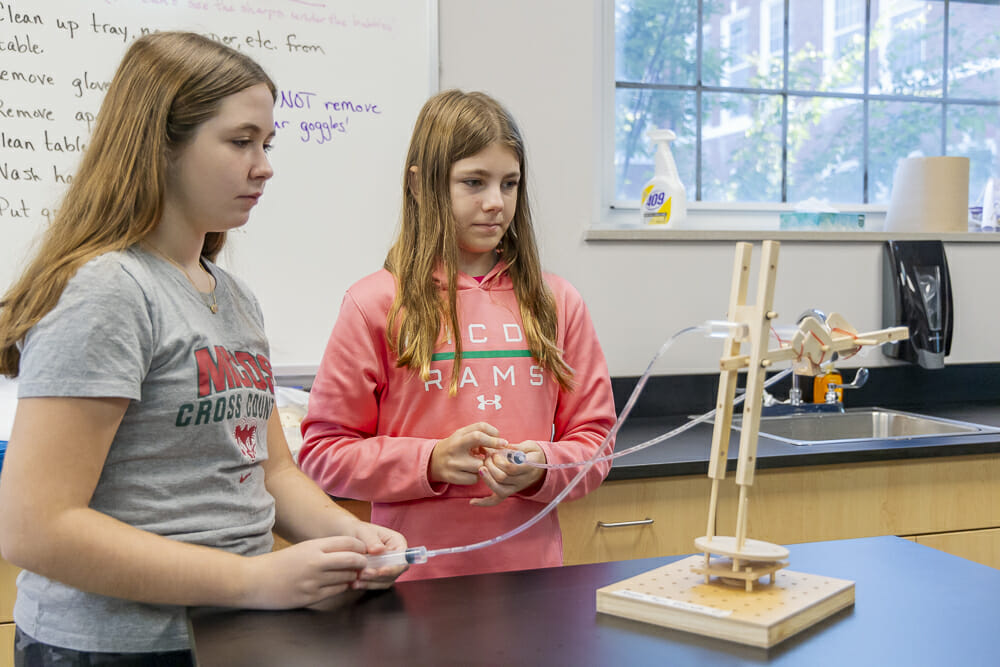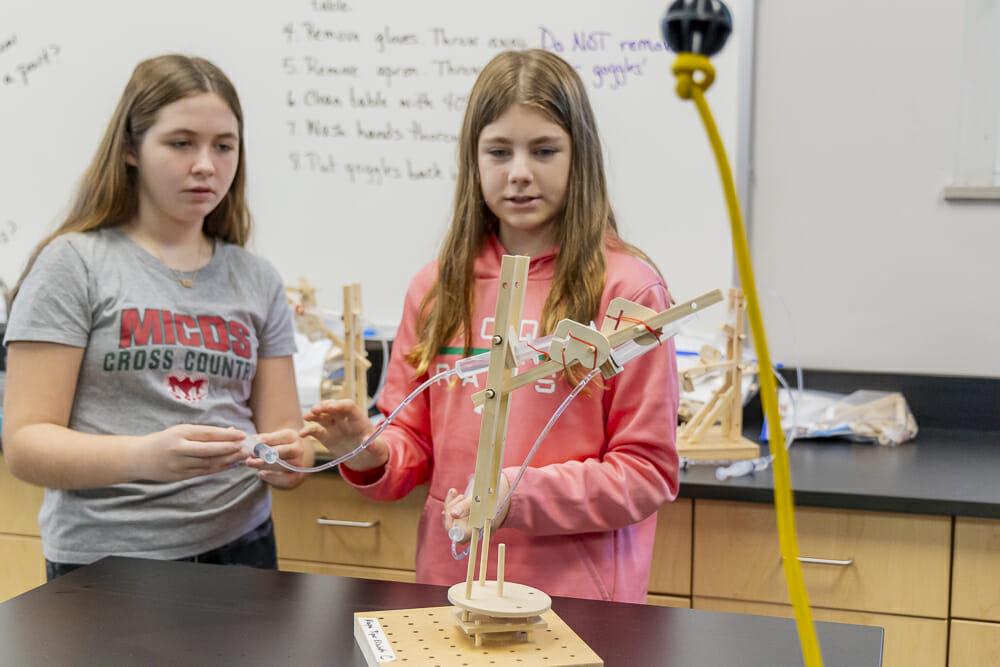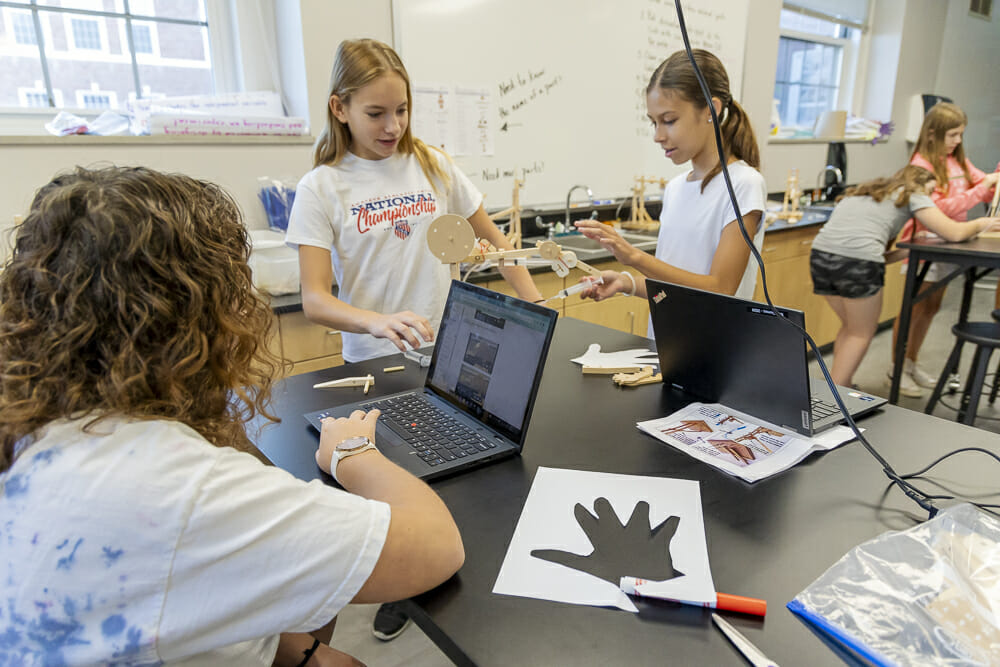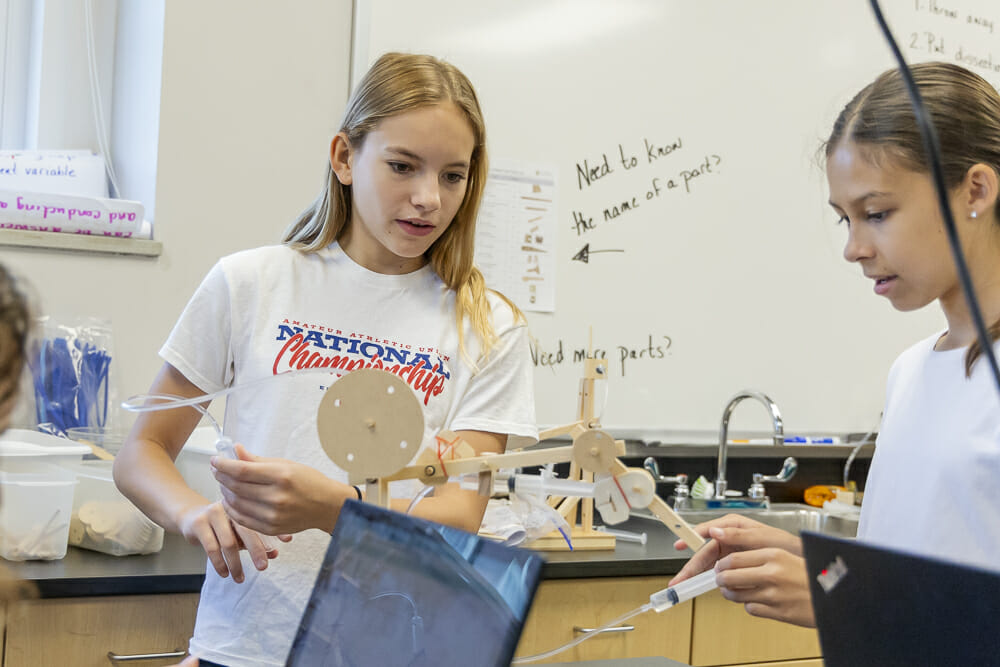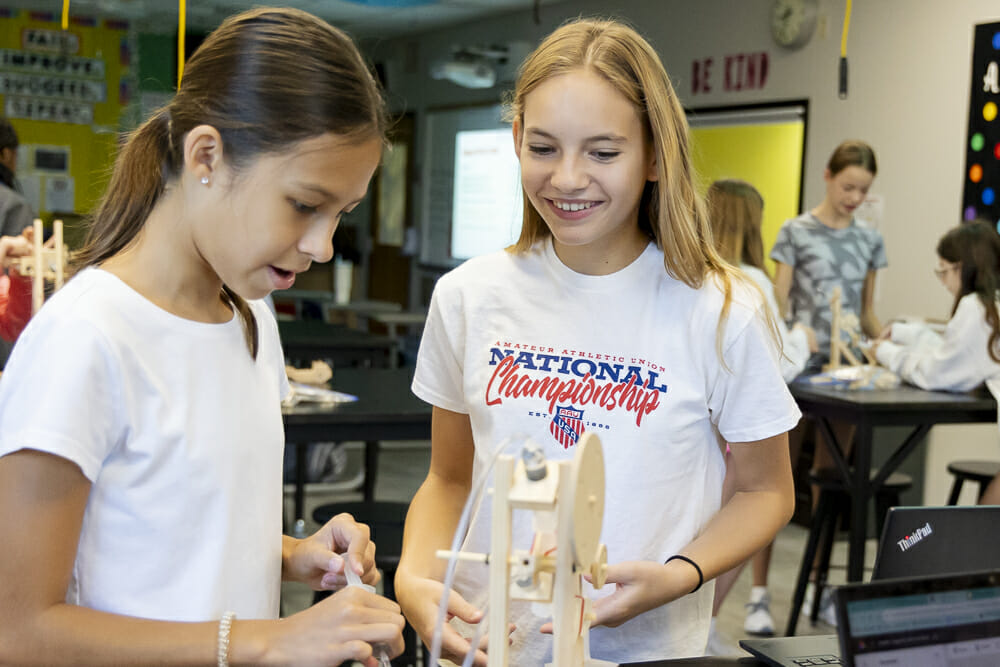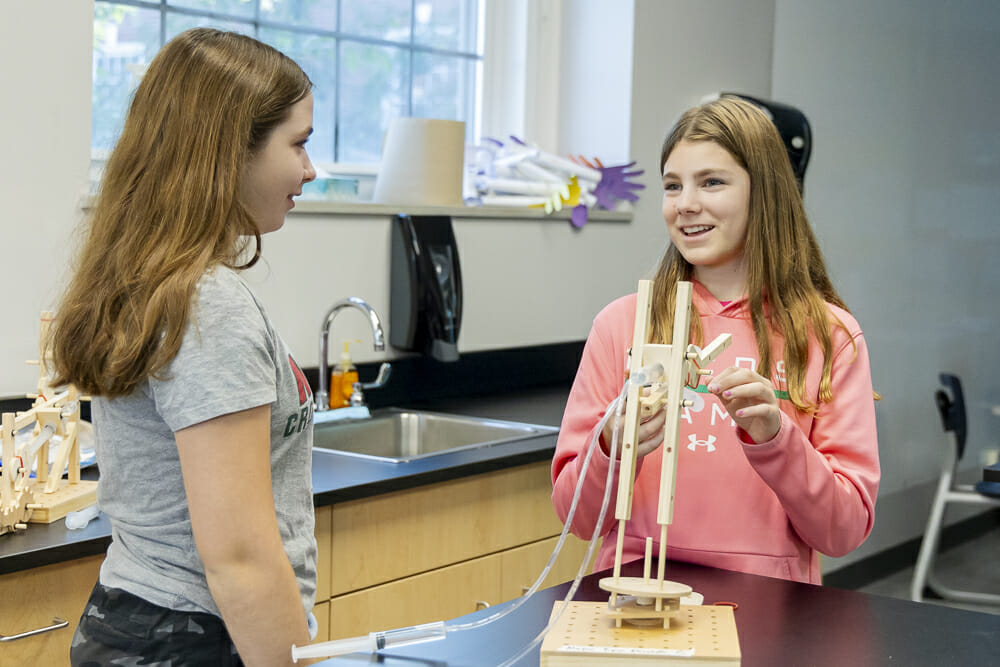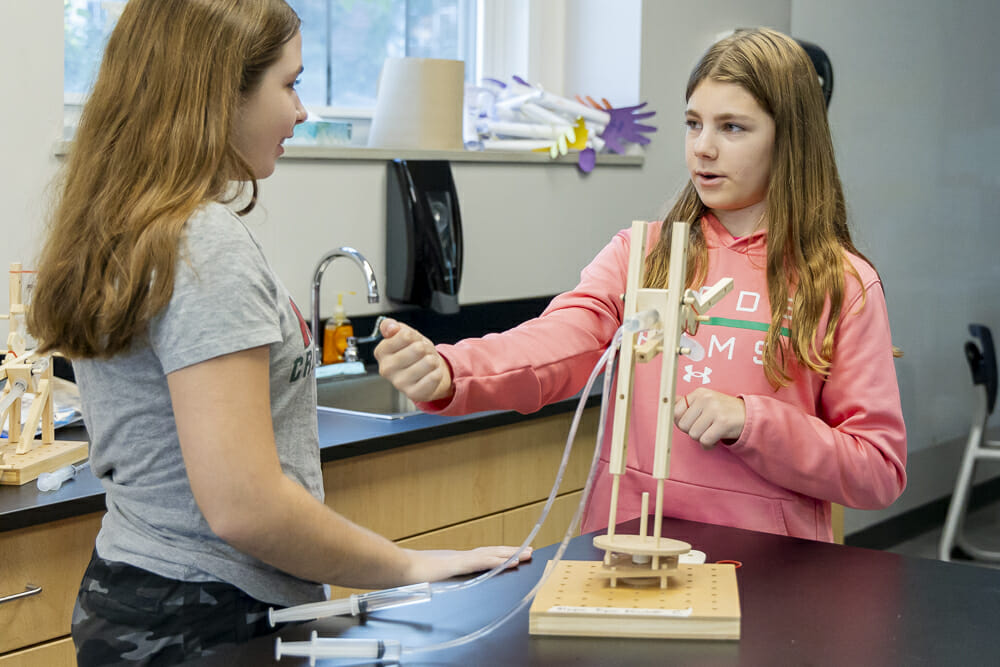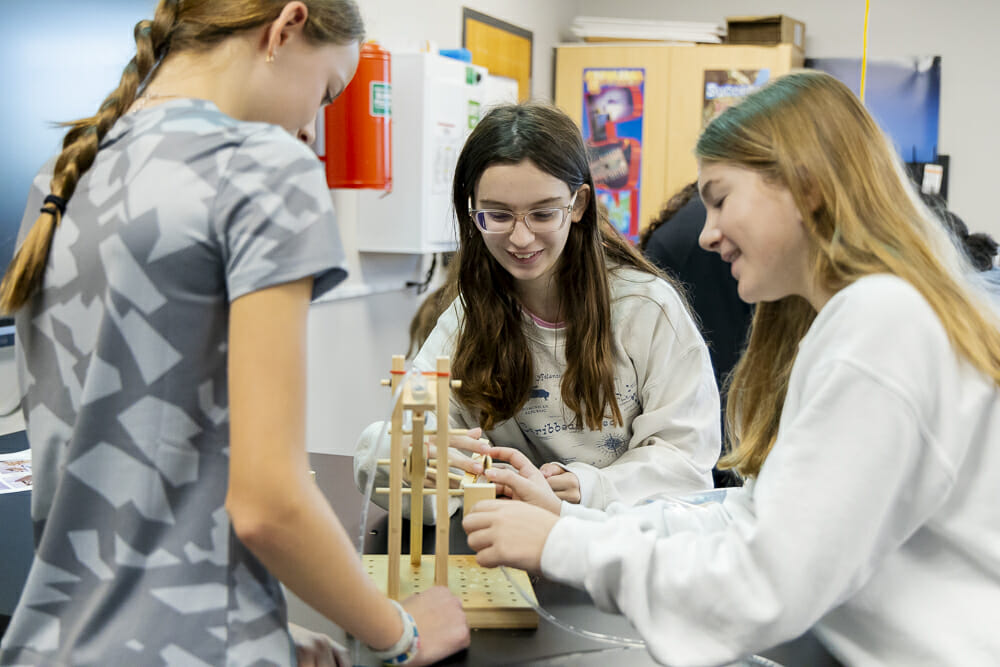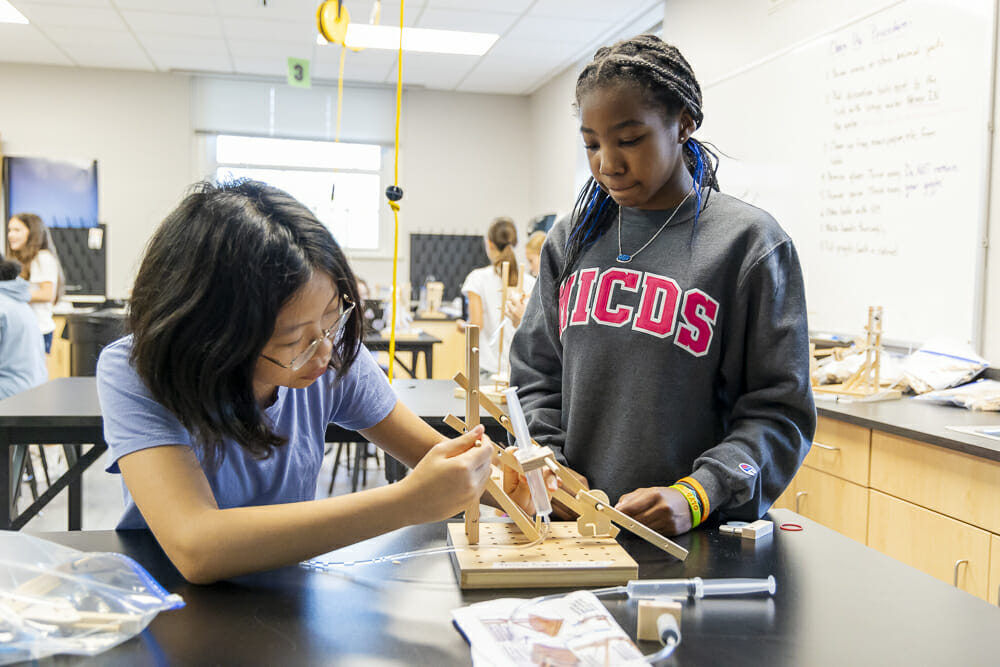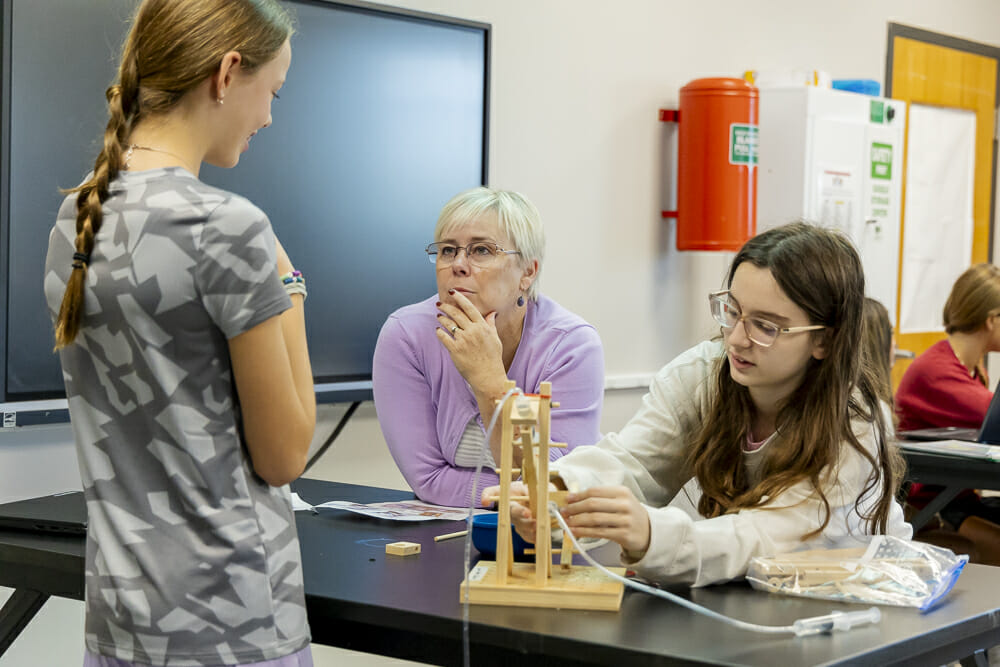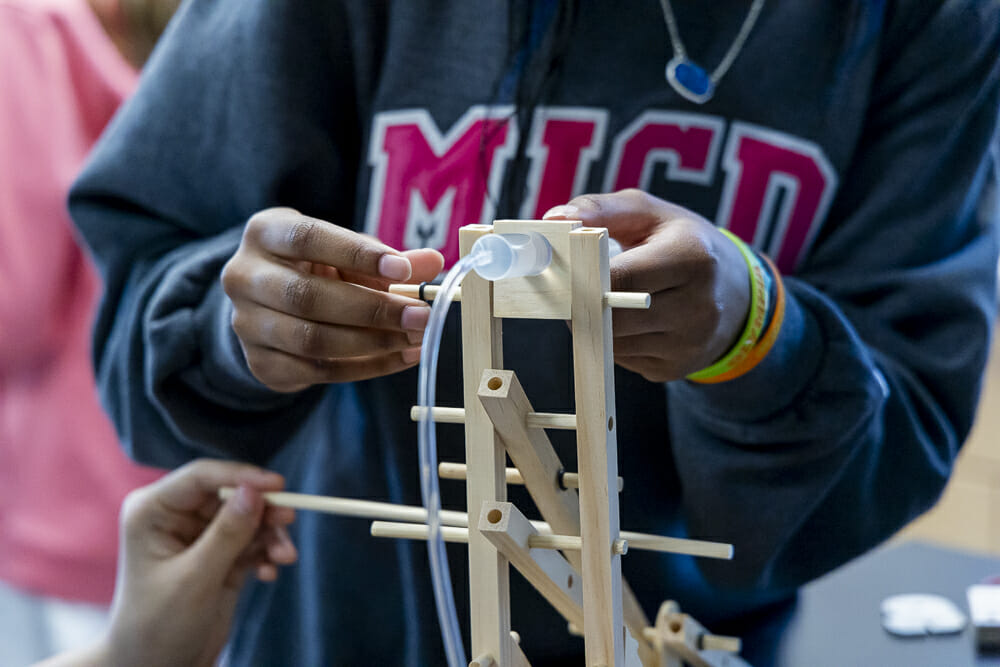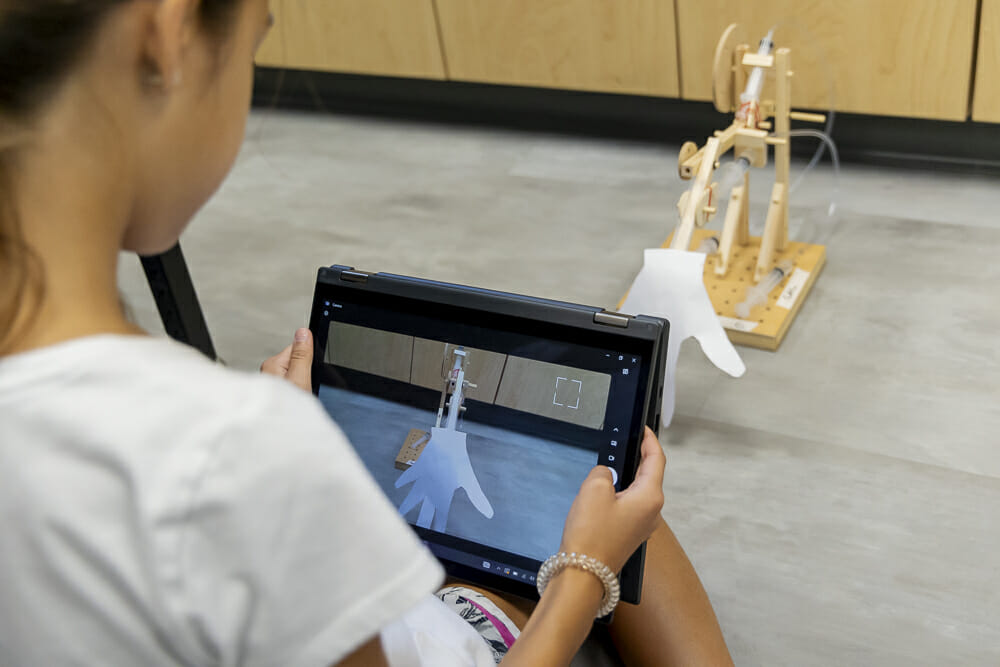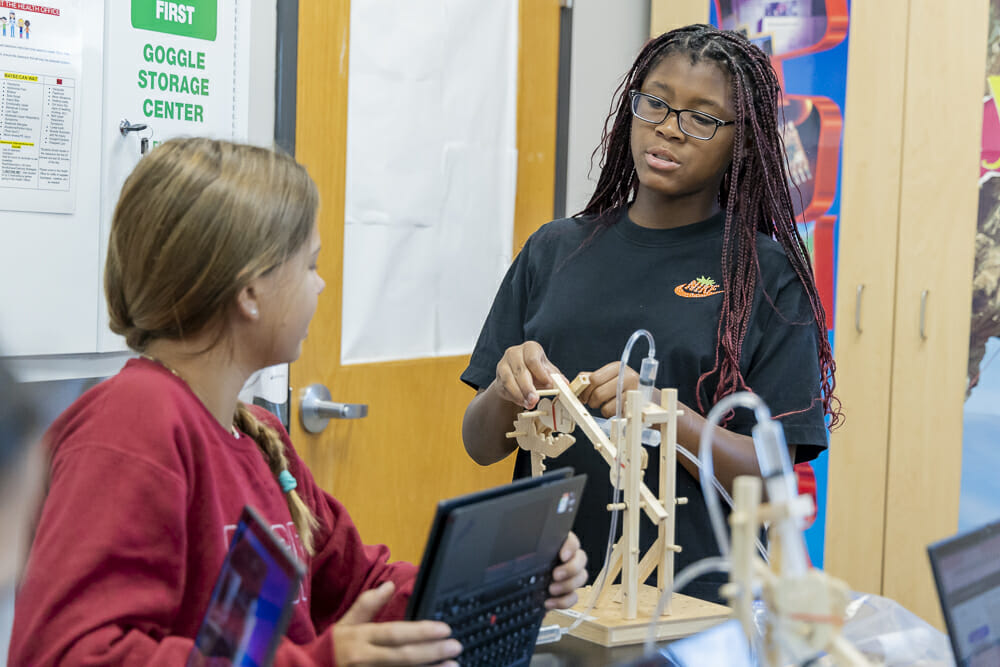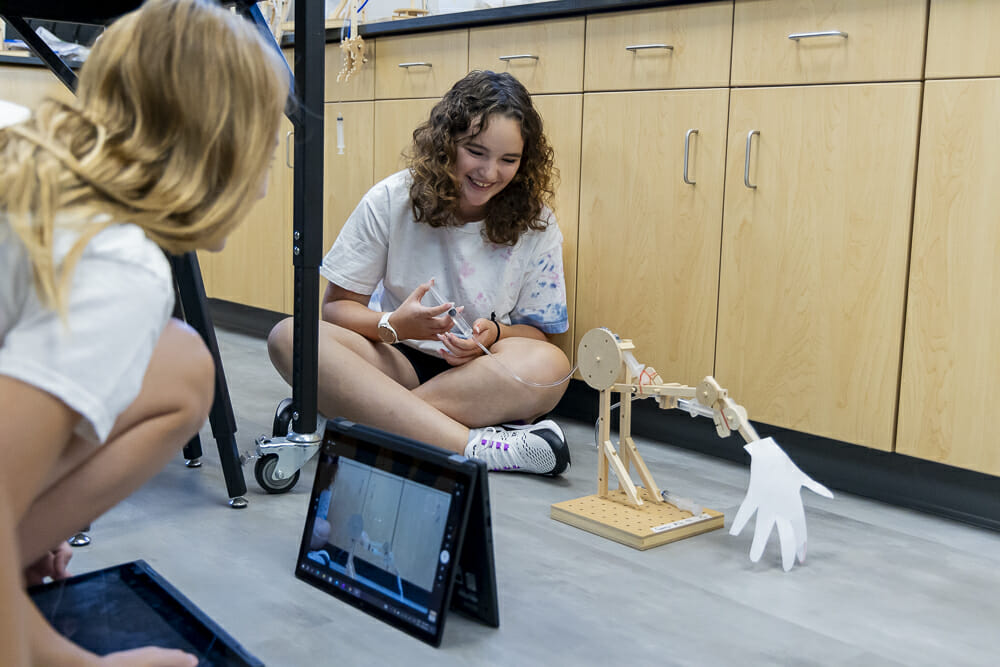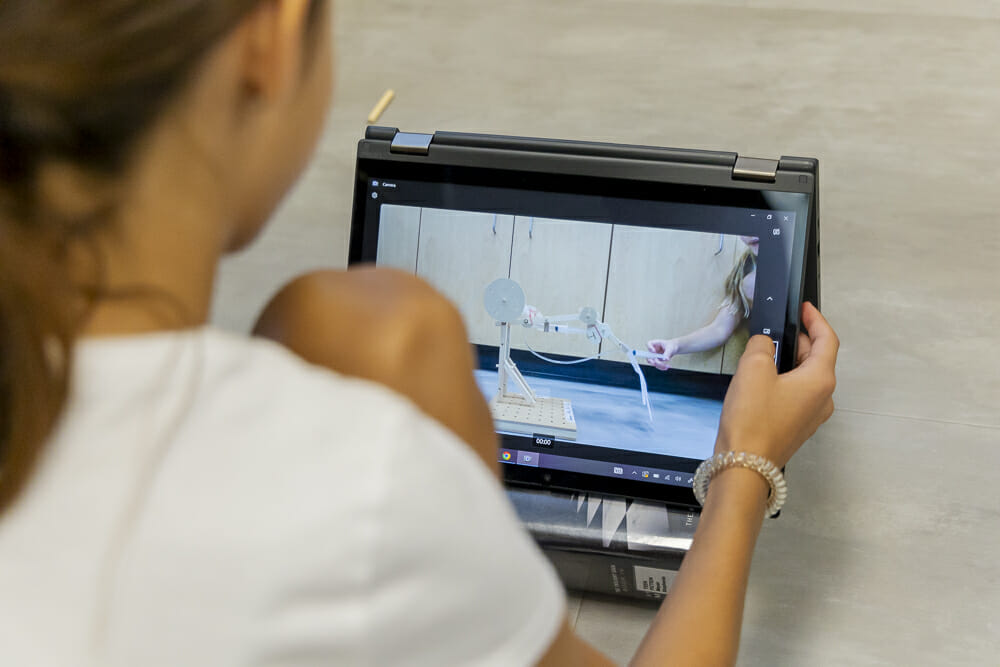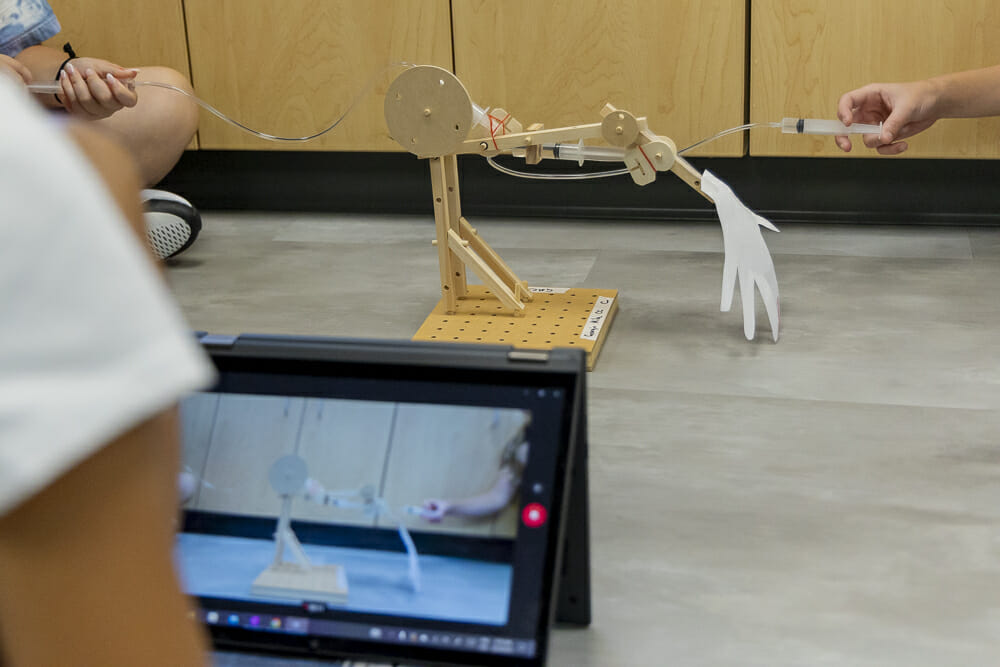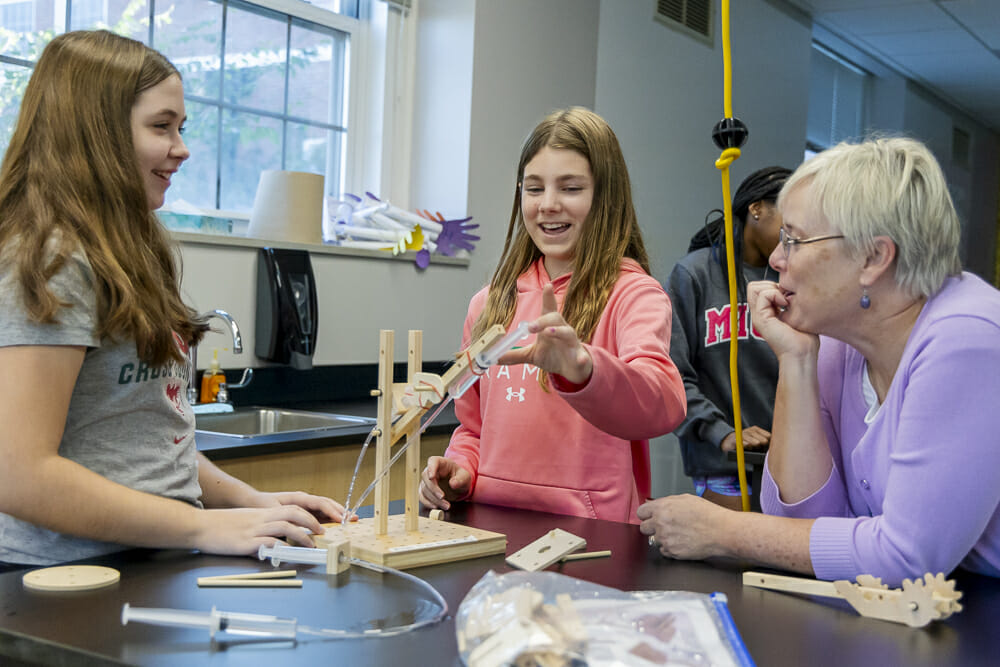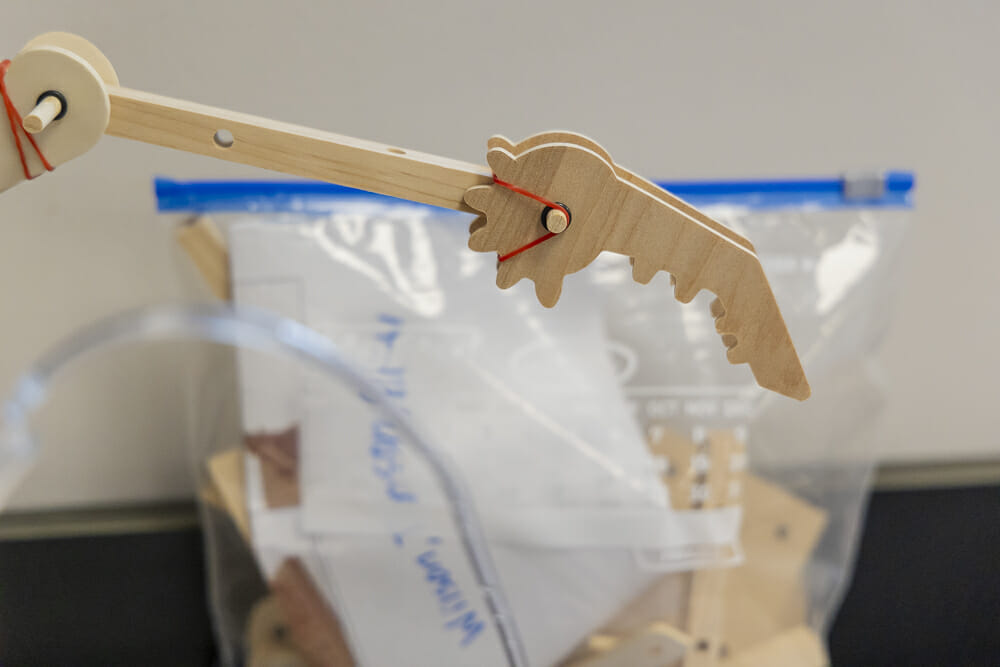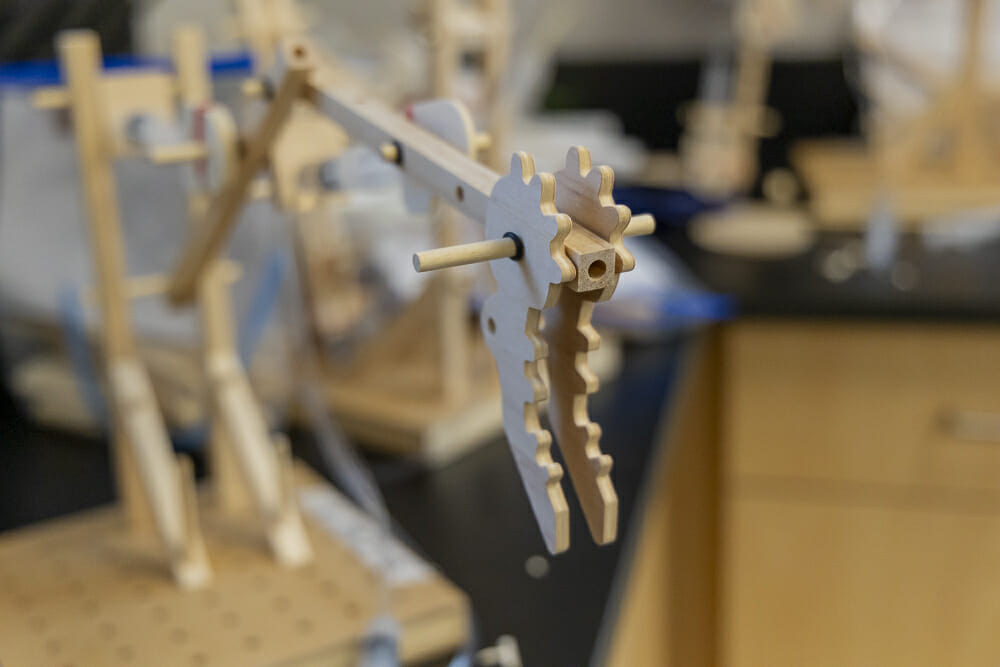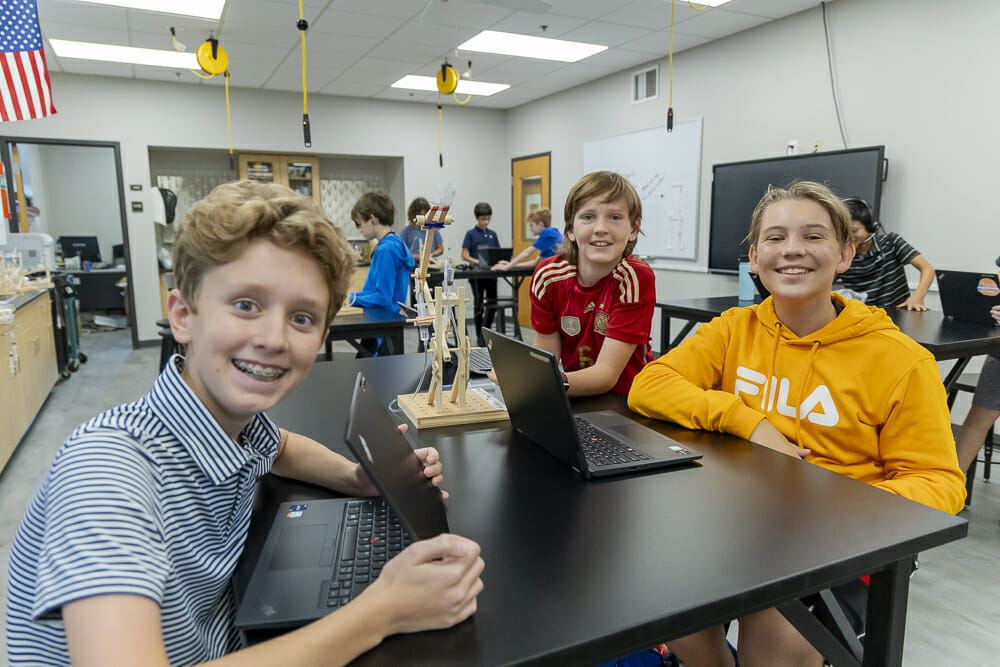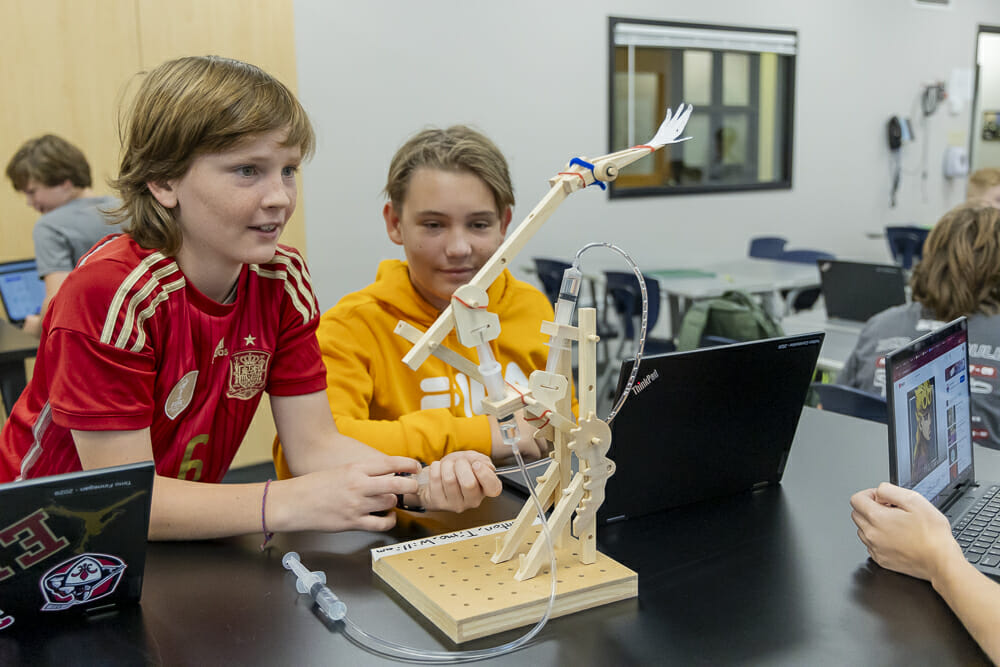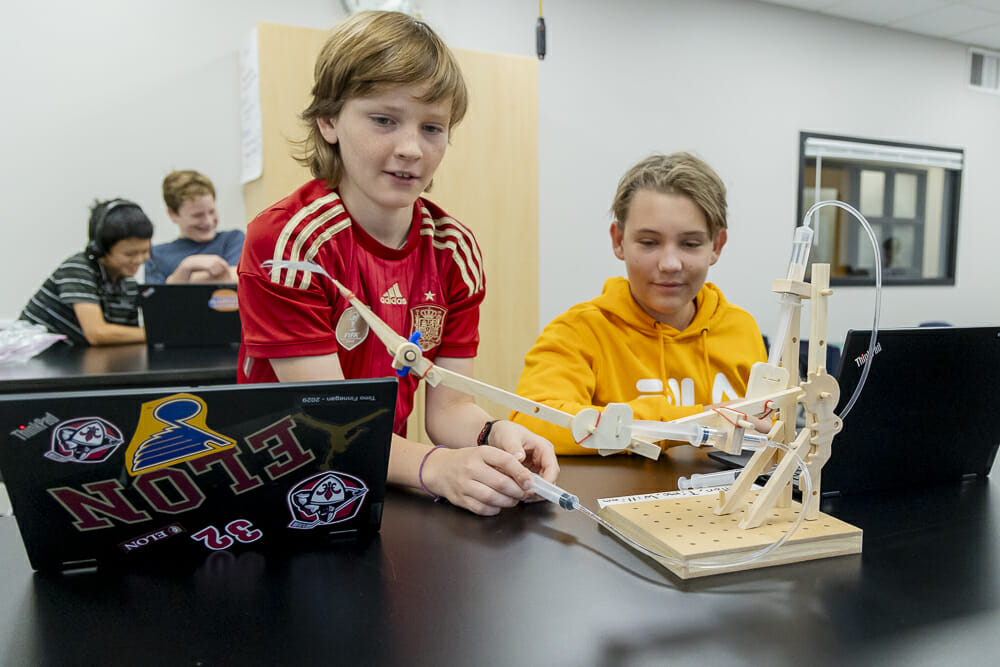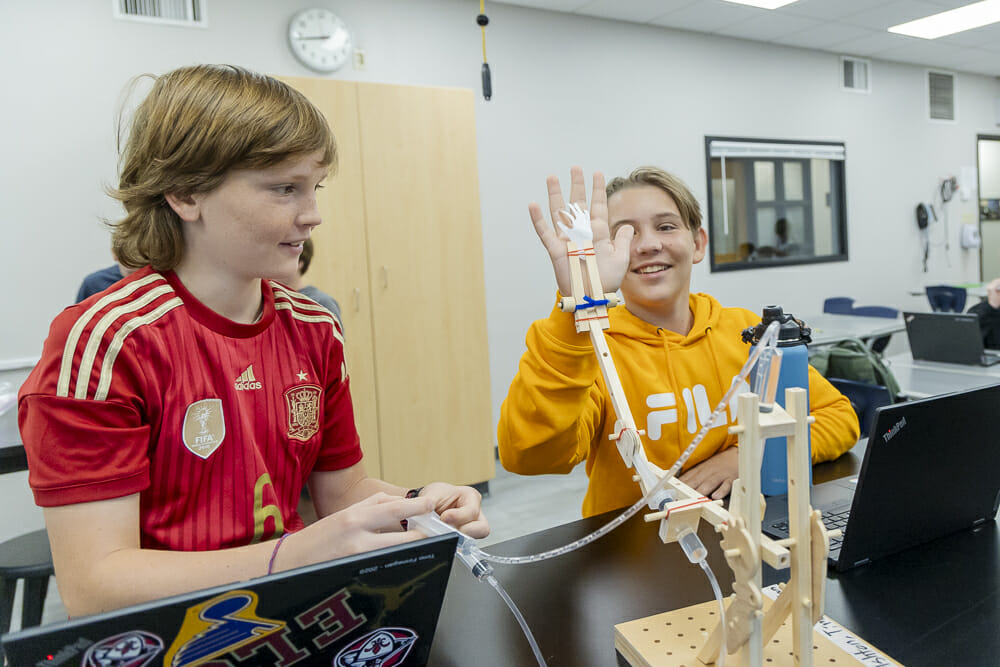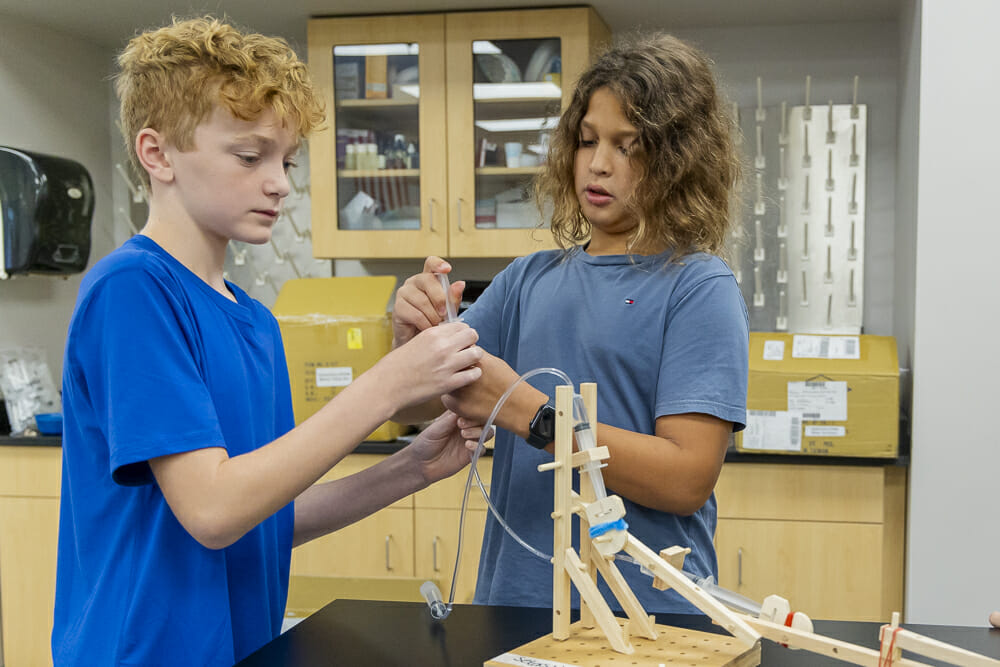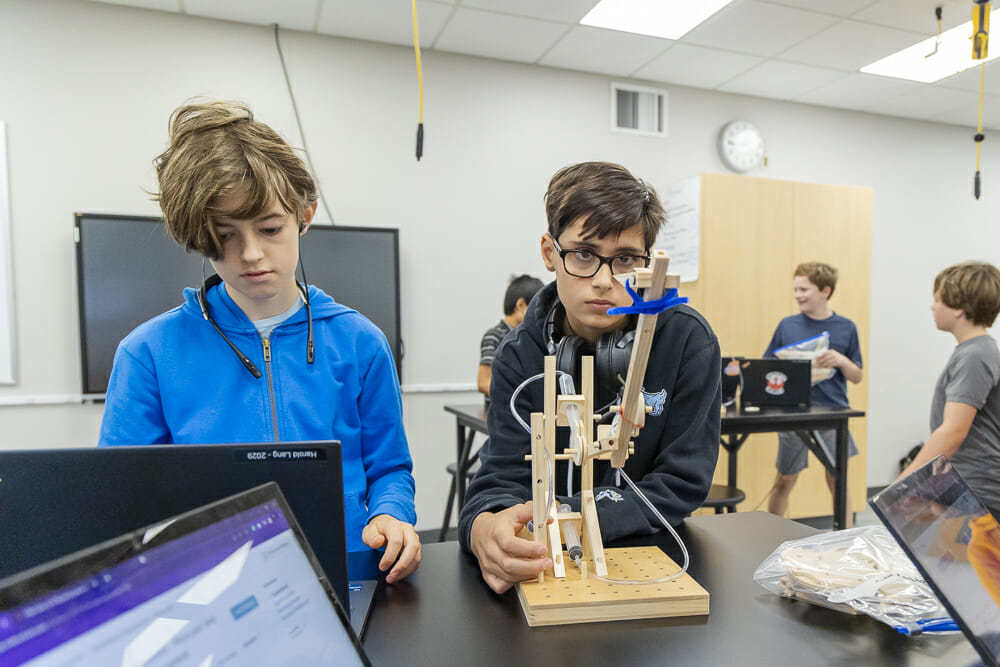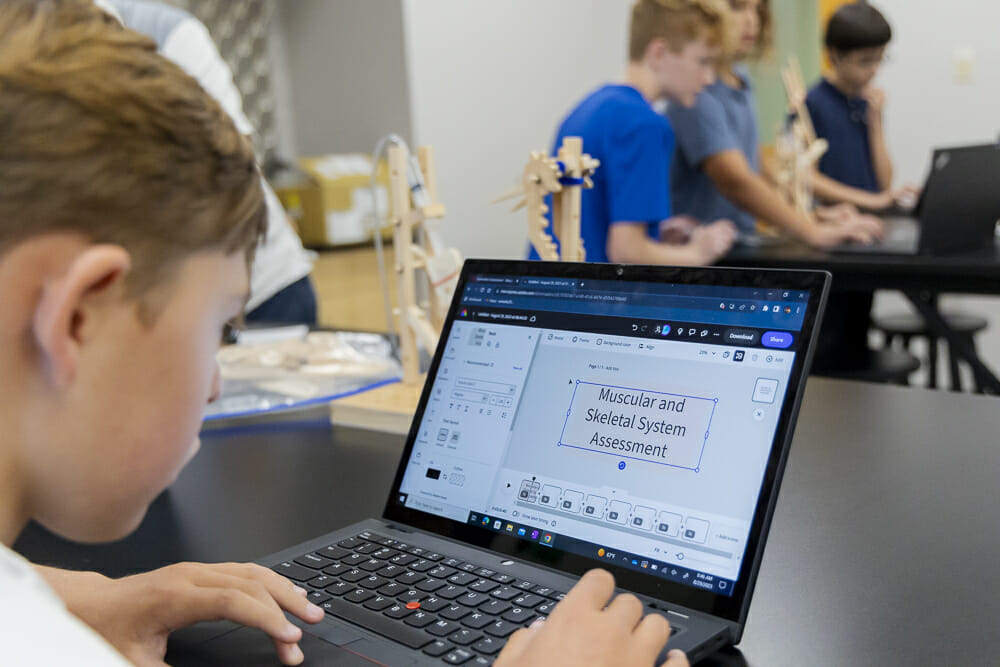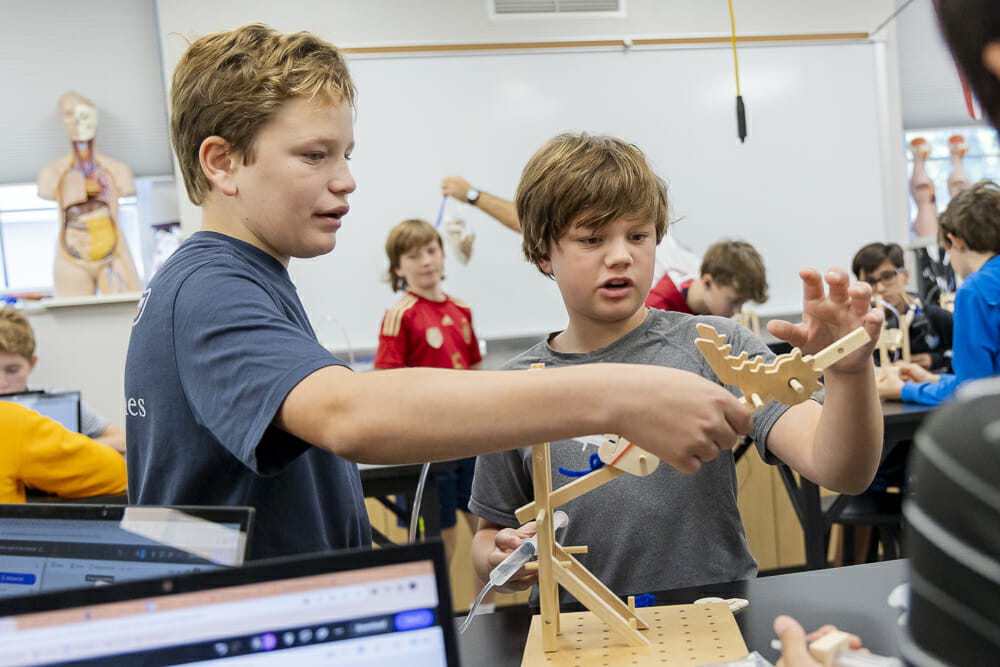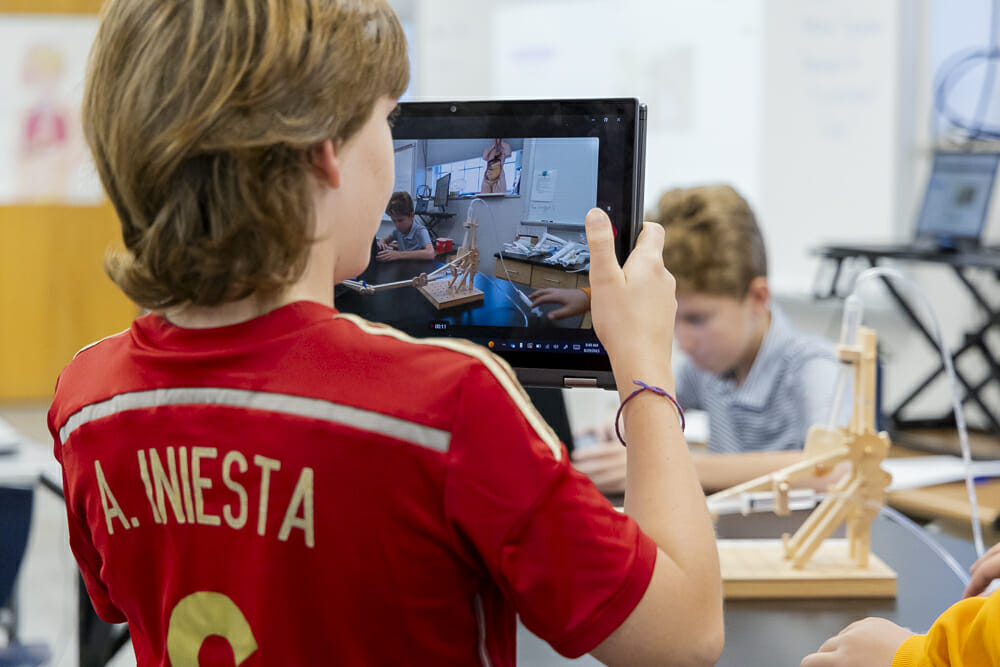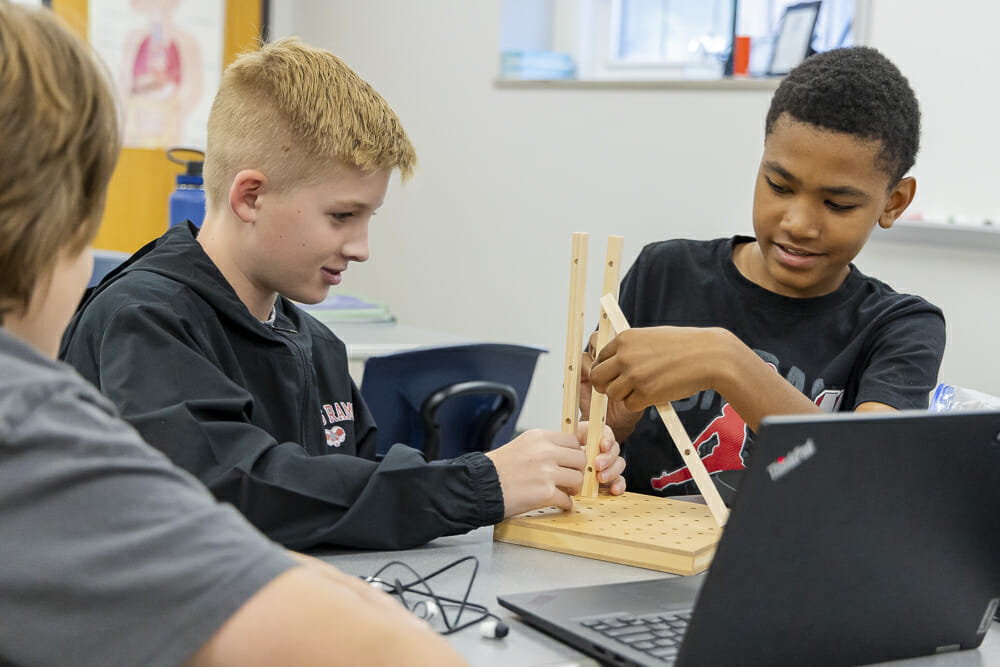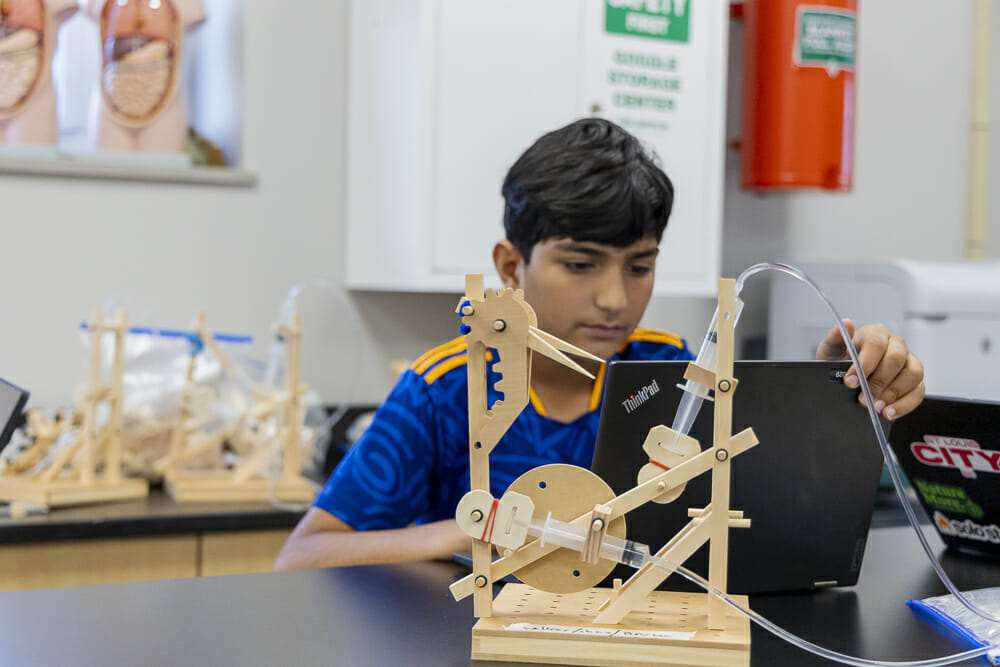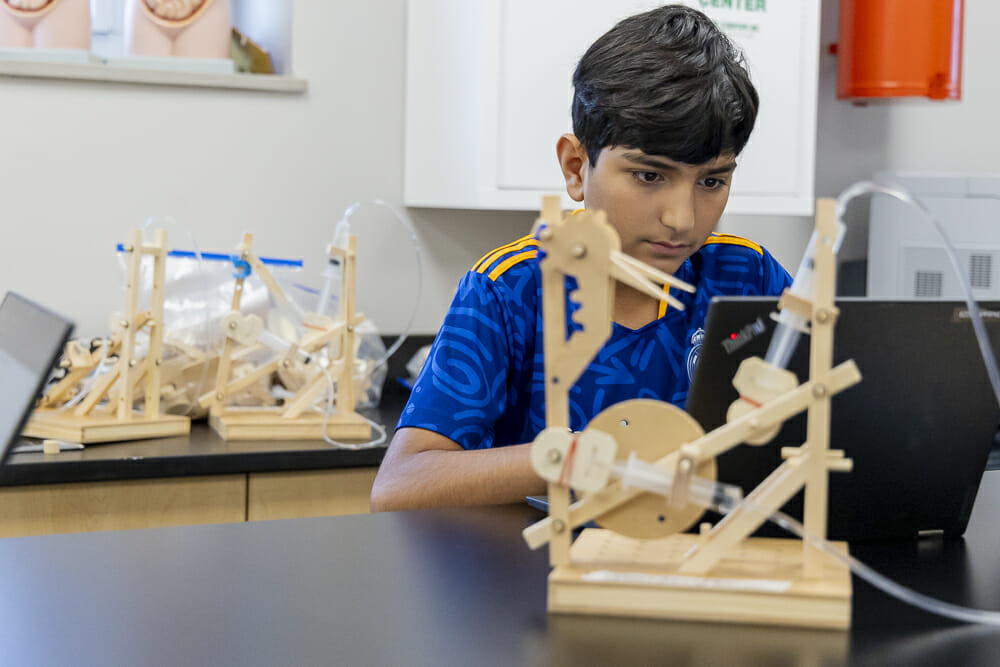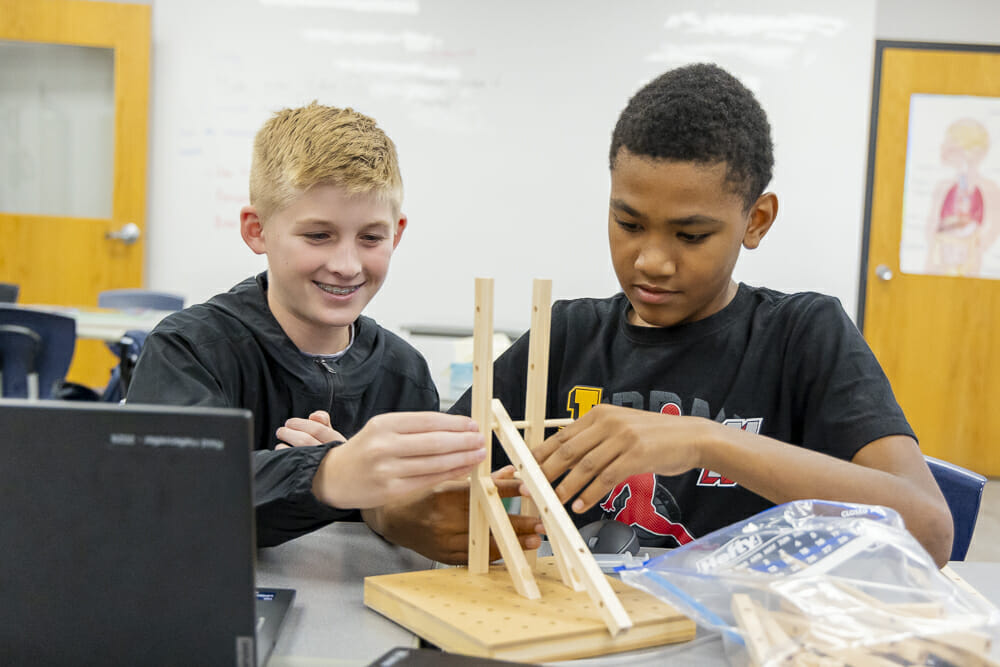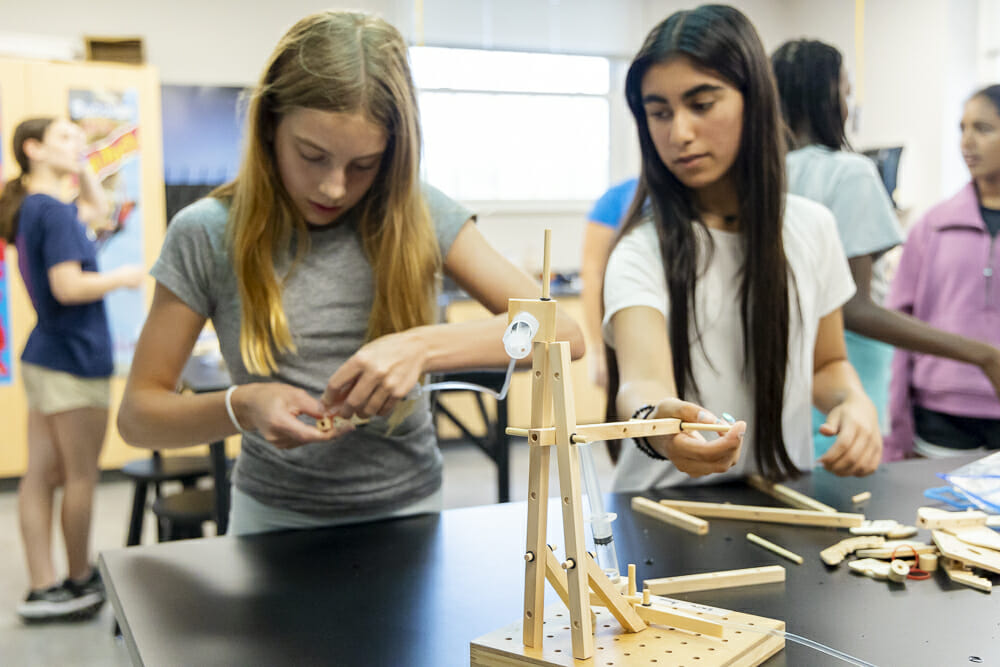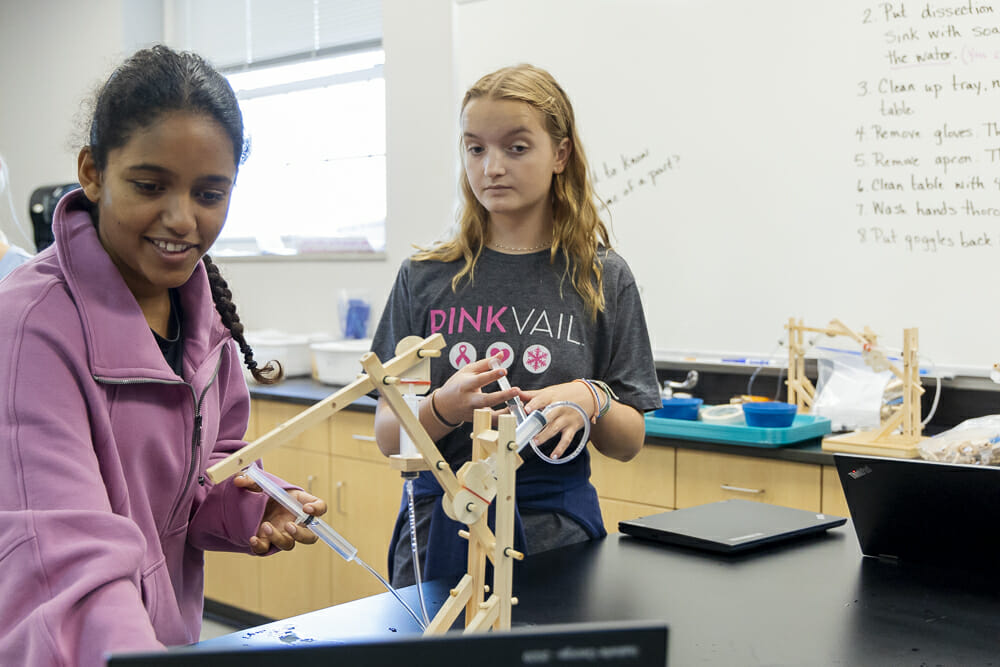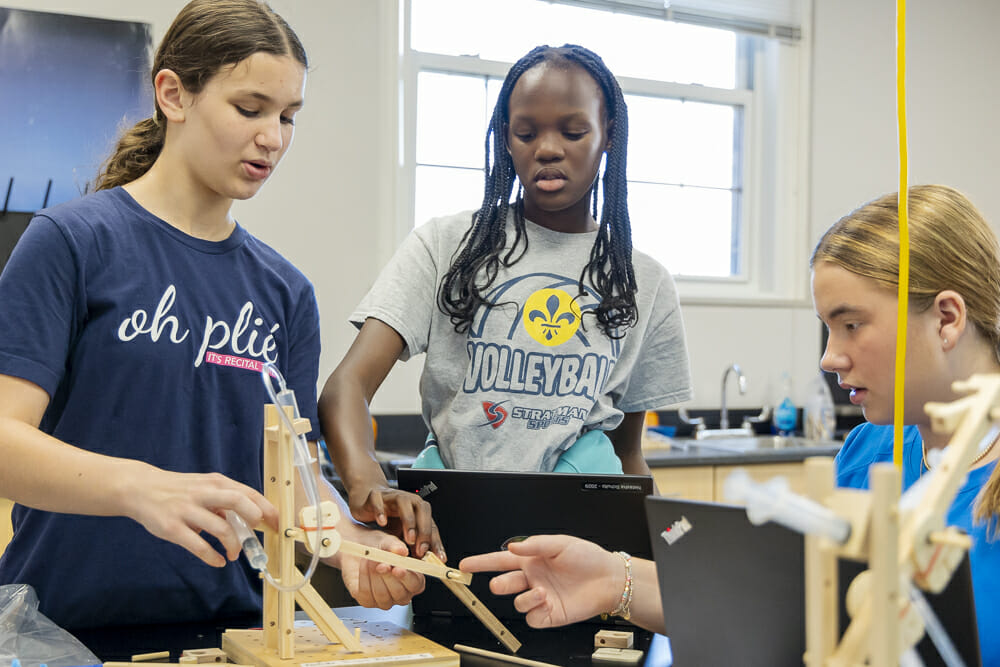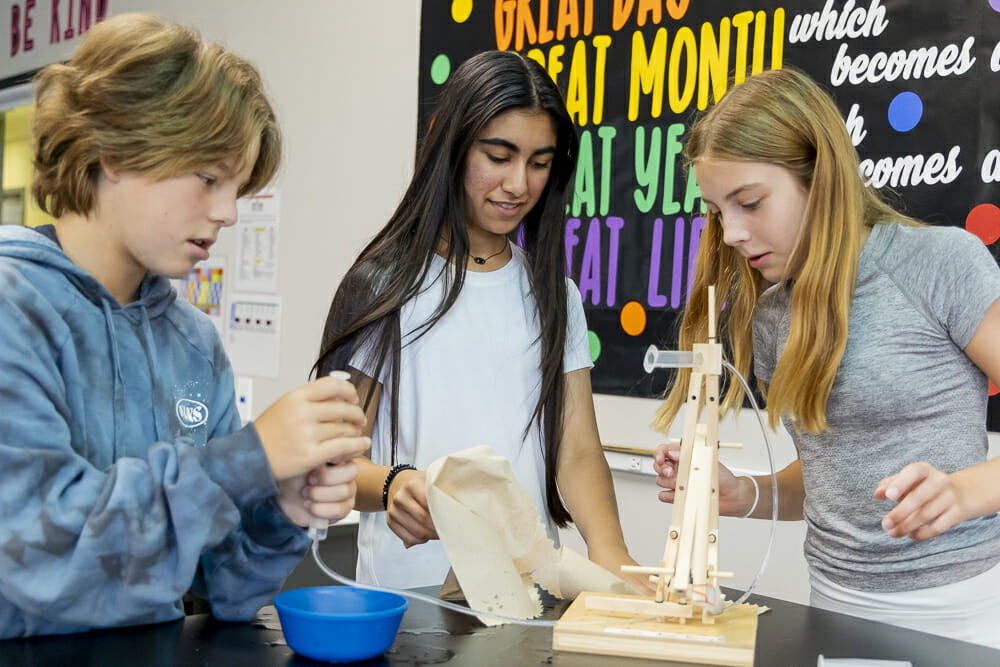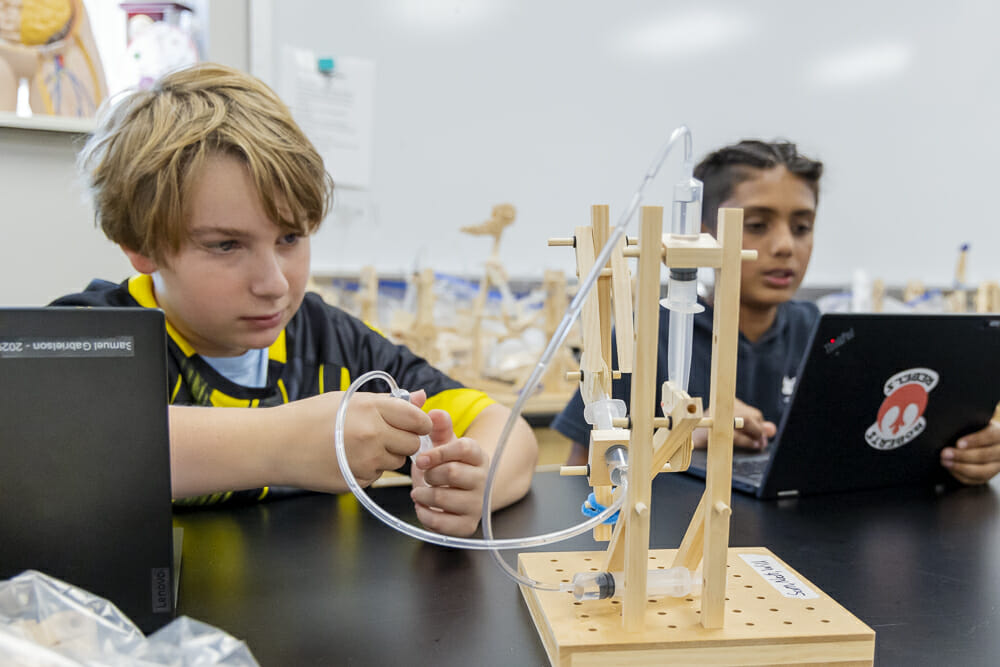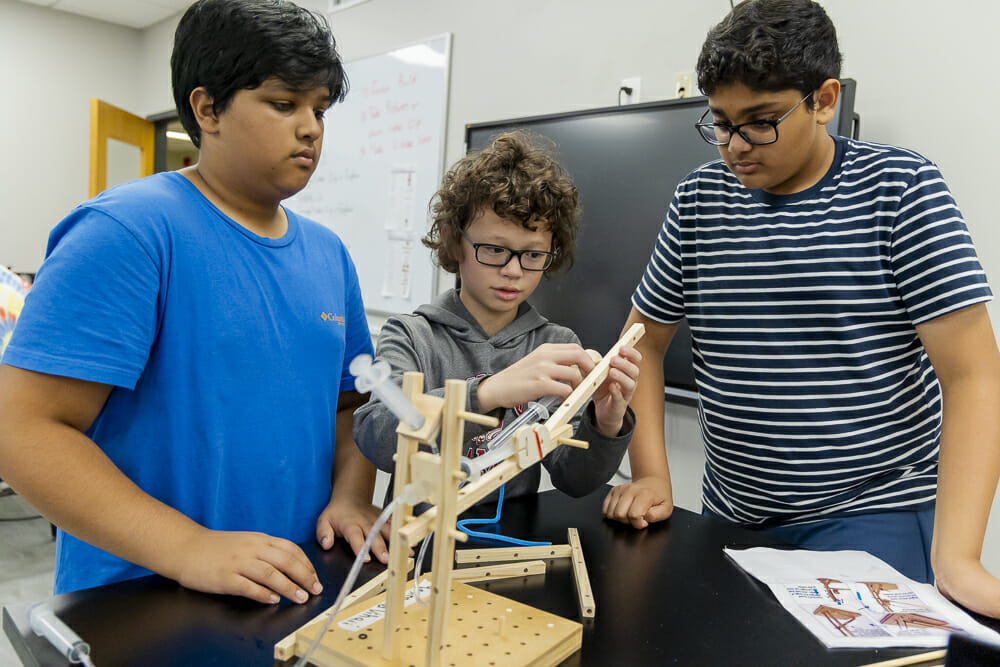What’s the best way to learn how arms work? Get your hands dirty! Well, not really dirty, but doing the type of hands-on work that brings learning to life.
Middle School students in Science 7 have been exploring more than just arms, actually. They’ve tackled the skeletal and muscular systems of the human body. The skeletal system works as a support structure for your body. It gives the body its shape, allows movement, makes blood cells, provides protection for organs, and stores minerals. The muscular system is composed of specialized cells called muscle fibers. Their predominant function is contractibility. Muscles, attached to bones or internal organs and blood vessels, are responsible for movement. Nearly all movement in the body is the result of muscle contraction.
To kick off this unit on the first day of class, they dissected raw chicken legs to examine how muscle and bone are attached and work together to allow humans to move. Maia Grant ’29 said, “I think that I never knew much about this. Learning about my own body gives me chills. It’s really cool.”
Less than two weeks later, they were ready to try building their own robotic arms. After learning how hydraulics work, the seventh-grade scientists divided into groups of three to build arms that bend and straighten with a variety of provided parts. “The assignment makes it way easier to understand how arms, in general, move,” said Preston Robinson-Williams ’29. “Also, when we built it (the robotic arm) we talked with each other about where the pieces would go to match our own arms.”
The students had time to collaborate until they figured it out, gaining a deeper understanding of how bones and muscles work together. Crystal Su ’29 said, “It was trial and error, and kind of frustrating because you keep getting it wrong. You eventually get it to work, and it helps you understand how muscles work.”
After building their arms, the students were tasked with creating videos explaining the connections between their robotic arm and their biological arm, describing which part of the articulated arm represents a tendon and which part is a joint, and explaining how they are similar. They used Adobe Express to make videos that included images, video clips, explanations, and their justifications for the similarity.
Rylan Gardner ’29 appreciated the project. “It is more hands-on,” he said. “It helps you understand what makes both the robotic arm and my arm move.”
Put your hands together for a round of applause for the learning these young scientists are doing. And think about the muscles and bones that work together when you do!
